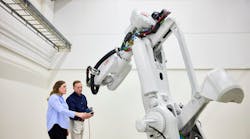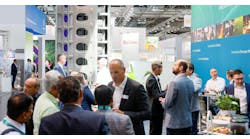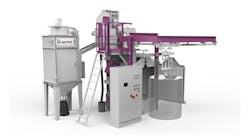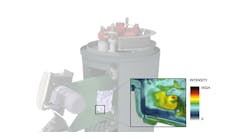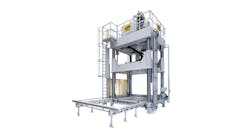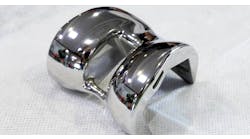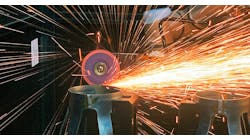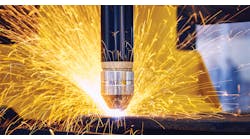Productivity and quality are critical to the success of any continuous-flow production philosophy. However, vacuum impregnation systems have remained antiquated, which can initiate production and quality issues in modern manufacturing environment. It explains why vacuum impregnation from most continuous-flow production plans.
That was the case of a vertically integrated automotive OEM. It had an outdated vacuum impregnation system installed that did not meet its continuous-flow strategy. The division that operates the vacuum impregnation system pours the metal, machines parts, and assembles components to produce finished engines.
The challenge — At the launch of a new engine block line, the OEM realized that its vacuum impregnation system could not reliably process the new products. The following challenges needed to be addressed:
• Sealing rate. The system was a dry vacuum (DV) process that resulted in only below-average sealing rates.
• Floor space. The current automated system was expansive. It did not fit the desired floor space or integrate with production. As a result, the size was debilitating to their production flow.
• Maintenance. The system required continuous support. Maintenance areas were difficult to access. Spare parts were expensive, meaning the operation had to keep a high inventory.
The solution — The plant operators realized that the current vacuum impregnation system would need to be replaced with a modern impregnation system. Based the challenges, Godfrey & Wing recommended a customized installation of its Continuous Flow Impregnation (CFi) system.
To improve the sealing rate, the CFi uses the patented Dry Vacuum and Pressure (DVP) process, which yields a higher seal rate than the DV process. The CFi with the DVP process incorporates a fast, deep vacuum to evacuate the air from the porosity. Then, after moving sealant to the part, the system applies high pressure to allow the sealant to penetrate deep into the casting walls.
The OEM specified precisely where to place the system on the manufacturing floor. Knowing this, the Godfrey & Wing engineering team designed the layout to accommodate the floor space and production integration.
The system was designed with a 7-axis robot for parts handling and conveyors integrated with machining and leak-test operations. The robotic arm forms the interface between the impregnation system and the processing line, while occupying the least amount of space. After impregnation, the castings are fed by the robot directly to leak-testing via a cooling conveyor belt. The automation enables continuous production in a modular, compact space.
The internal components were positioned to enable ease of maintenance without interrupting production. The maintenance team is now able to service principal components through the rear panel doors, rather than accessing the system through the safety fence. Sanitary connectors are used that can be maintained by hand without the need for specialty tools. Each module has a line rate disconnect so that maintenance does not need to power down the entire system for service.
The results — The CFi was installed, operators and maintenance were trained, and the system was running production in two months. Since then, the CFi is addressing all the OEM's challenges.
• Increased sealing rate. The CFi has increased recovery of the castings by 15%. Scrap from porosity has been virtually eradicated.
• Conserve floor space. The system layout cut required floor space by over 50%.
• Reduced maintenance cost. The purchase of the CFi has reduced maintenance costs by 65%.
As OEMs look for ways to improve continuous-flow manufacturing, a paradigm shift is necessary. This one found value by investing in a lean and modern vacuum impregnation system. The CFi plays an integral production role by increasing casting recovery while reducing maintenance costs.
Andy Marin is the marketing coordinator for Godfrey & Wing, a developer of vacuum impregnation technology. Contact him at [email protected]
